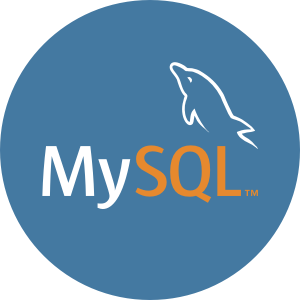MySQL vs Snowflake
A detailed comparison
Compare MySQL and Snowflake for time series and OLAP workloads
Learn About Time Series DatabasesChoosing the right database is a critical choice when building any software application. All databases have different strengths and weaknesses when it comes to performance, so deciding which database has the most benefits and the most minor downsides for your specific use case and data model is an important decision. Below you will find an overview of the key concepts, architecture, features, use cases, and pricing models of MySQL and Snowflake so you can quickly see how they compare against each other.
The primary purpose of this article is to compare how MySQL and Snowflake perform for workloads involving time series data, not for all possible use cases. Time series data typically presents a unique challenge in terms of database performance. This is due to the high volume of data being written and the query patterns to access that data. This article doesn’t intend to make the case for which database is better; it simply provides an overview of each database so you can make an informed decision.
MySQL vs Snowflake Breakdown
 |
 |
|
| Database Model | Relational database |
Cloud data warehouse |
| Architecture | MySQL uses a client-server model with a multi-layered server design. It supports the SQL query language and offers various storage engines, such as InnoDB and MyISAM, for different use cases. MySQL can be deployed on-premises, in the cloud, or as a managed service. |
Snowflake can be deployed across multiple cloud providers, including AWS, Azure, and Google Cloud |
| License | GNU General Public License v2 (for the open-source Community Edition) |
Closed source |
| Use Cases | Web applications, e-commerce, data warehousing, content management systems, business applications |
Big data analytics, Data warehousing, Data engineering, Data sharing, Machine learning |
| Scalability | Supports vertical scaling by adding more resources to a single node; horizontal scaling can be achieved through replication, sharding, and third-party tools |
Highly scalable with multi-cluster shared data architecture, automatic scaling, and performance isolation |
Looking for the most efficient way to get started?
Whether you are looking for cost savings, lower management overhead, or open source, InfluxDB can help.
MySQL Overview
MySQL is an open source relational database management system that was first released in 1995. It is one of the most popular databases worldwide due to its ease of use, reliability, and performance. MySQL is widely used for web applications, online transaction processing, and data warehousing. Oracle Corporation acquired MySQL in 2010, but it remains open source software with an active community of contributors.
Snowflake Overview
Snowflake is a cloud-based data warehousing platform that was founded in 2012 and officially launched in 2014. It is designed to enable organizations to efficiently store, process, and analyze large volumes of structured and semi-structured data. Snowflake’s unique architecture separates storage, compute, and cloud services, allowing users to independently scale and optimize each component.
MySQL for Time Series Data
MySQL can be used for storing and analyzing time series data, but it will not be as efficient as a dedicated time series databases. MySQL’s flexibility and support for various indexing techniques can make it a suitable choice for small to medium sized time series datasets. For large-scale time series data workloads, with high write throughput or use cases where low latency queries are required, MySQL will tend to struggle unless highly customized.
Snowflake for Time Series Data
While Snowflake is not specifically designed for time series data, it can still effectively store, process, and analyze such data due to its scalable and flexible architecture. Snowflake’s columnar storage format, combined with its powerful query engine and support for SQL, makes it a suitable option for time series data analysis.
MySQL Key Concepts
- Table: A collection of related data organized in rows and columns, which is the primary structure for storing data in MySQL.
- Primary Key: A unique identifier for each row in a table, used to enforce data integrity and enable efficient querying.
- Foreign Key: A column or set of columns in a table that refers to the primary key in another table, used to establish relationships between tables.
Snowflake Key Concepts
- Virtual Warehouse: A compute resource in Snowflake that processes queries and performs data loading and unloading. Virtual Warehouses can be independently scaled up or down based on demand.
- Micro-Partition: A storage unit in Snowflake that contains a subset of the data in a table. Micro-partitions are automatically optimized for efficient querying.
- Time Travel: A feature in Snowflake that allows users to query historical data at specific points in time or within a specific time range.
- Data Sharing: The ability to securely share data between Snowflake accounts, without the need to copy or transfer the data.
MySQL Architecture
MySQL is a relational database management system that uses SQL for defining and manipulating data. It follows the client-server model, where a MySQL server accepts connections from multiple clients and processes their queries. MySQL’s architecture includes a storage engine framework that allows users to choose from different storage engines, such as InnoDB, MyISAM, or Memory, to optimize the database for specific use cases.
Snowflake Architecture
Snowflake’s architecture separates storage, compute, and cloud services, allowing users to scale and optimize each component independently. The platform uses a columnar storage format and supports ANSI SQL for querying and data manipulation. Snowflake is built on top of AWS, Azure, and GCP, providing a fully managed, elastic, and secure data warehouse solution. Key components of the Snowflake architecture include databases, tables, virtual warehouses, and micro-partitions.
Free Time-Series Database Guide
Get a comprehensive review of alternatives and critical requirements for selecting yours.
MySQL Features
ACID compliance
MySQL supports transactions and adheres to the ACID (Atomicity, Consistency, Isolation, Durability) properties, ensuring data integrity and consistency.
Scalability
MySQL can scale both vertically and horizontally, depending on the storage engine and configuration.
Replication and high availability
MySQL supports various replication techniques, including master-slave and master-master replication, to provide high availability and fault tolerance.
Snowflake Features
Elasticity
Snowflake’s architecture allows for independent scaling of storage and compute resources, enabling users to quickly adjust to changing workloads and demands.
Fully Managed
Snowflake is a fully managed service, eliminating the need for users to manage infrastructure, software updates, or backups.
Security
Snowflake provides comprehensive security features, including encryption at rest and in transit, multi-factor authentication, and fine-grained access control.
Data Sharing
Snowflake enables secure data sharing between accounts without the need to copy or transfer data.
MySQL Use Cases
Web applications
MySQL is a popular choice for powering web applications, content management systems, and e-commerce platforms due to its flexibility, ease of use, and performance.
Online transaction processing (OLTP)
MySQL is suitable for OLTP systems that require high concurrency, fast response times, and support for transactions.
Data warehousing
While not specifically designed for data warehousing, MySQL can be used for small to medium-sized data warehouses, leveraging its support for indexing, partitioning, and other optimization techniques.
Snowflake Use Cases
Data Warehousing
Snowflake provides a scalable, secure, and fully managed data warehousing solution, making it suitable for organizations that need to store, process, and analyze large volumes of structured and semi-structured data.
Data Lake
Snowflake can serve as a data lake for ingesting and storing large volumes of raw, unprocessed data, which can be later transformed and analyzed as needed.
Data Integration and ETL
Snowflake’s support for SQL and various data loading and unloading options makes it a good choice for data integration and ETL
MySQL Pricing Model
MySQL is available in multiple editions with different feature sets and pricing models. The MySQL Community Edition is open source and free to use, while the MySQL Enterprise Edition includes additional features, such as advanced security, monitoring, and management tools, and requires a subscription. Pricing for the Enterprise Edition depends on the number of server instances and the level of support required.
Snowflake Pricing Model
Snowflake offers a pay-as-you-go pricing model, with separate charges for storage and compute resources. Storage is billed on a per-terabyte, per-month basis, while compute resources are billed based on usage, measured in Snowflake Credits. Snowflake offers various editions, including Standard, Enterprise, Business Critical, and Virtual Private Snowflake, each with different features and pricing options. Users can also opt for on-demand or pre-purchased, discounted Snowflake Credits.
Get started with InfluxDB for free
InfluxDB Cloud is the fastest way to start storing and analyzing your time series data.
